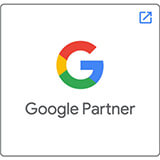How Bullet Points Can Make Your Website More User Friendly
When writing content for your website, it’s important to consider how user-friendly it will be. Often, when you have a lot of information to cover, it’s easy to put everything in long paragraph form. However, this can be daunting to read. Bullet points are a simple and effective way to keep everyone’s attention while conveying the most essential pieces of information. In this webinar, you’ll learn how to apply bullet points to all of your content.
Webinar Translation
Whether you’re looking to update your current website or creating a new website from scratch, it’s crucial to think about how users will view and digest the content on your site. While you may have a lot of important information to convey, you need to realize that online users are typically in a hurry. They want to find the information they’re looking for as quickly and efficiently as possible. This means that if the content on your site is hard to navigate, the user probably is going to leave your site and jump to another website where the content is more user-friendly and where they can find what they are looking for.
This webinar presentation is designed to help you make the content on your website more user-friendly by using one important tool, bullet points. Today, we’re going to cover the two W’s and one H of bullet points:
- Why you should use bullet points.
- When you should use bullet points.
- How you should use bullet points.
Why You Should Use Bullet Points
Keep in mind that there’s a ton of competition for users on the internet. With over a billion active websites and new sites being added every day, your site needs to be as user-friendly as possible. This means you need to make sure your content is well-organized and visually appealing. If it isn’t, an online user has plenty of other places to go. Unlike a book or written article, when users visit your site, they don’t want to see long paragraph after long paragraph of text. They want to see short snippets of information, and they can easily navigate to find the answers to their question.
Bulleted lists that highlight important information are not only visually appealing, but they’re also generally far more helpful to users than long paragraphs of text. This is because, for the most part, people do not read online content word for word. They quickly skim the page to see if it includes the information they’re looking for. Remember, online users are in a hurry, and when they visit your site, they expect to find pertinent information and answers quickly and easily. A bulleted list could help them do this.
When to Use Bullet Points
While most people recognize that bullet points can go a long way in creating online content that is organized and user-friendly, they often wonder when they should use them. While there are no set rules and it is really up to you, you should consider using bullet points when you want to draw the user’s attention to a piece of specific information or concept.
For instance, if you want your online users to know what differentiates your company from the competition, a bulleted list is a great way to highlight key information about your organization. Your list could include:
- Short statements about your customers
- Your current sales figures or results
- Awards or accolades your organization has received
- Other vital facts about your organization that you want to market to online users
You may also want to use bullet points to help users better understand complicated concepts or ideas. For instance, if you’re trying to explain how to do something, a bulleted list is much easier to follow than a long paragraph. Keep in mind that online users are easily distracted. Paragraphs take too long to read, and often, by the time a person gets to the end, they’ve already forgotten what they have read. A bulleted list allows you to quickly go back and review the content to make sure you’re following all the steps. Also, if you’re trying to help an online user understand complicated information, bullets can be used to break up the material into smaller parts and help make sure that critical information does not get lost in the paragraph.
Let’s face it, most people find long paragraphs to be boring and will avoid reading them whenever they can. When you visit a website, you want instant access to information. You don’t want to have to swipe through long sections of text to find what you’re looking for. A person’s eyes are naturally drawn to list.
For example, look at the two examples on the slide. Even though the paragraph format is at the very top of the slide, you are probably immediately drawn to the bulleted list at the bottom. This list is far easier to read. You can quickly see what compensation XYZ law firm may be able to recover for you. In the paragraph format at the top, you have to read through multiple sentences before you get to the content covering compensation, and when you do, you may even miss the information because it’s so embedded in the paragraph.
How to Use Bullet Points
So at this point, you probably agree that using bullet points to display and highlight content on your site sounds like a good idea. You may even have some ideas of your own as to where it makes sense to break up your content into lists. However, you may be wondering if there are specific rules that you need to follow when you use bullet points. While every website is different, there are some general guidelines you should follow.
- Keep your bullets as short as possible. One line is best, but no more than two to three lines. If you go any longer than this, it starts to look like another paragraph.
- Use a parallel structure for bullets in the same list. [inaudible 00:04:28] start each bullet point with the same part of speech.
- Use consistent punctuation for your bullets. You have different options here. You may want to use phrases or fragments with no periods, full sentences with capital letters and periods at the end, question format or semi-colons at the end of each bulleted line and a period at the end of the list. It’s really up to you.
Some Other Things to Consider
Break up a long bulleted list by creating separate sets. For instance, rather than putting the advantages and disadvantages of a program together in one long list, use two different lists, one for advantages and one for disadvantages. Use numbers when you have a long list of bullet points. This really helps you follow along with the different steps. Generally, you should introduce bullet points with a colon. A semi-colon is not appropriate. And when your bullet points are long, consider using bold or italics to emphasize the beginning of a bullet point.
While the round or circular bullet is generally considered as default symbol in Microsoft Word, you can easily select other shapes or symbols for your list. These include:
- Arrows →
- Diamonds ◆
- Numbers 1, 2, 3
- Letters a, b, c
- Asterisks *
- Check marks ✔︎
- and many other different types of symbols
Overall though, you should try to use a consistent font and set of symbols on your website.
To conclude, some general things to keep in mind as you review and prepare content for your website. Website content is very different from a textbook or written article. While you may have a lot of useful information, it needs to be visually appealing and easy to navigate, or people won’t read it. When online users ran on your site, they want immediate access to information. If they don’t find what they’re looking for, they’ll bounce to another site. Online users do not read pages word for word. They typically read less than 20% of the words on a page. This means that they skim the content to find the answers to their questions. Overall, bullet points are a really effective tool to help you organize and highlight key information on your website.






